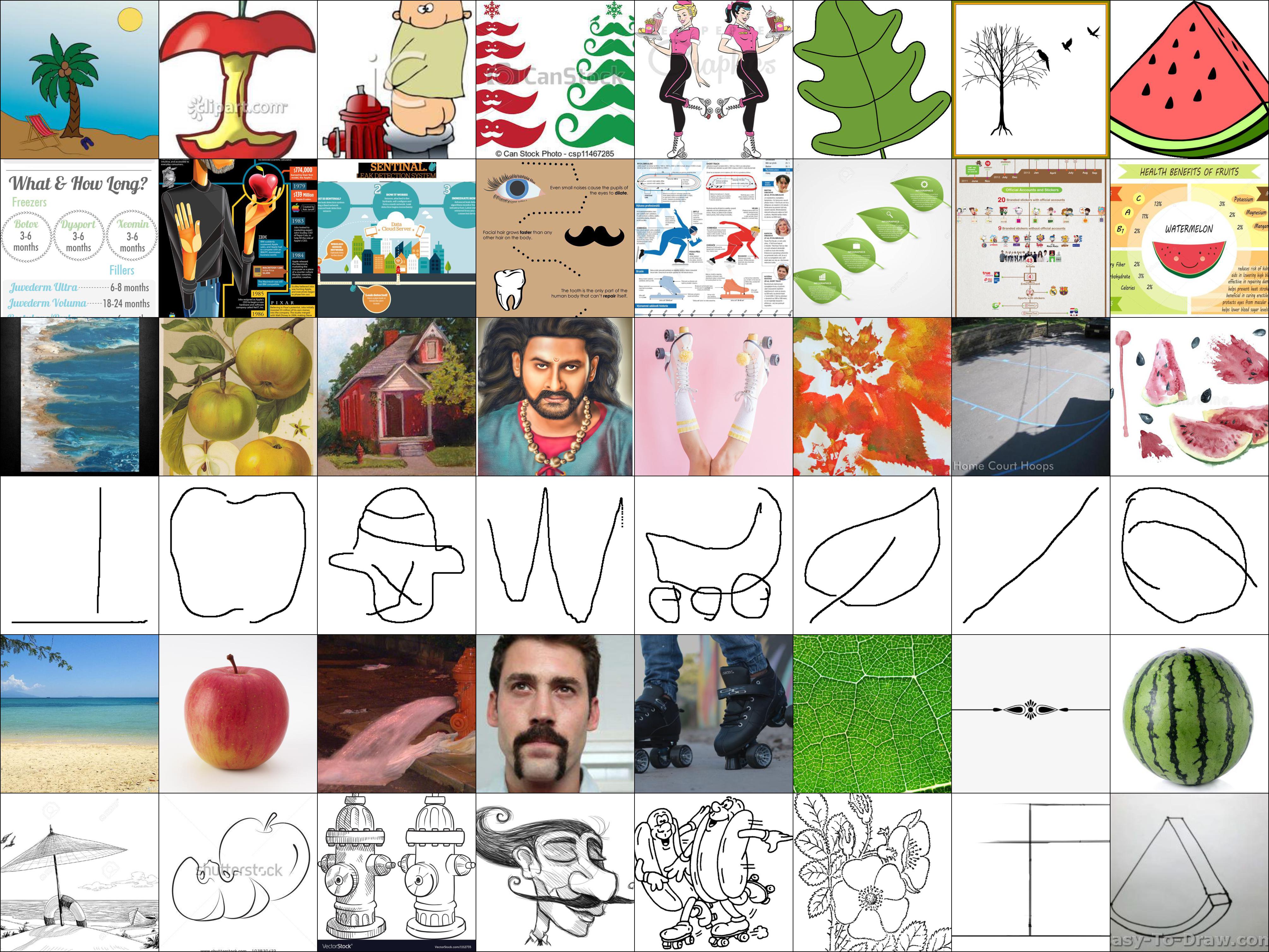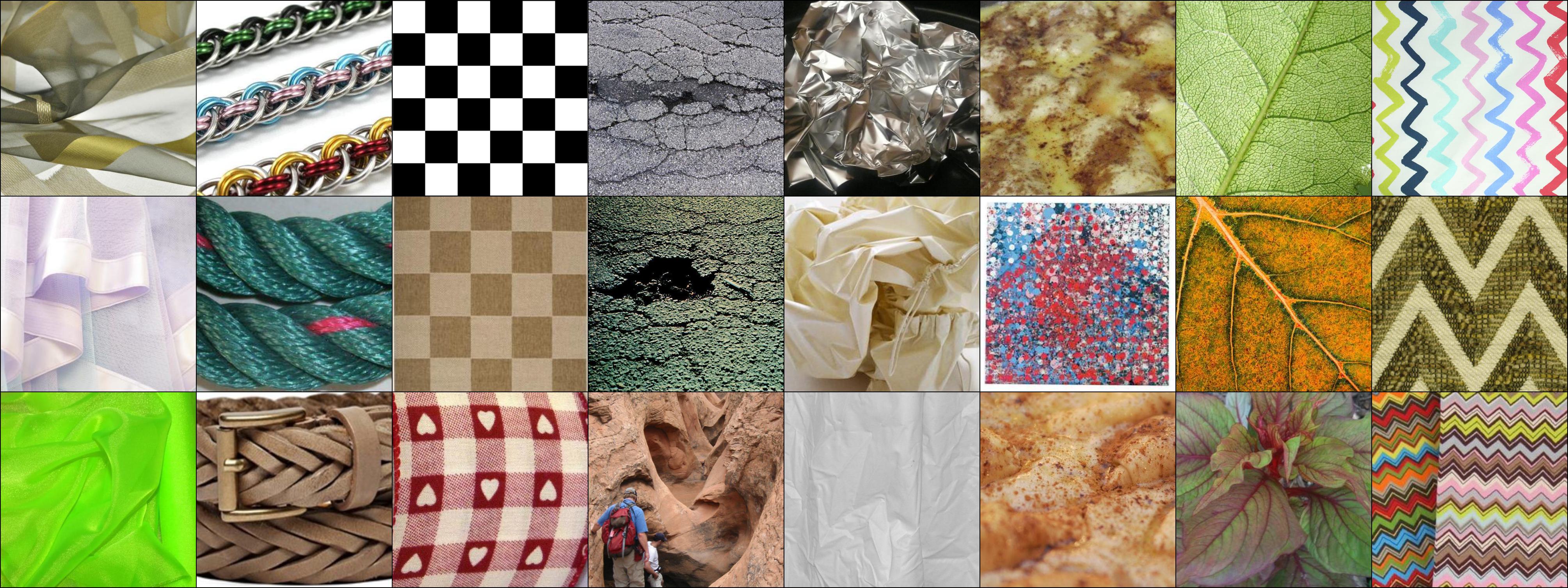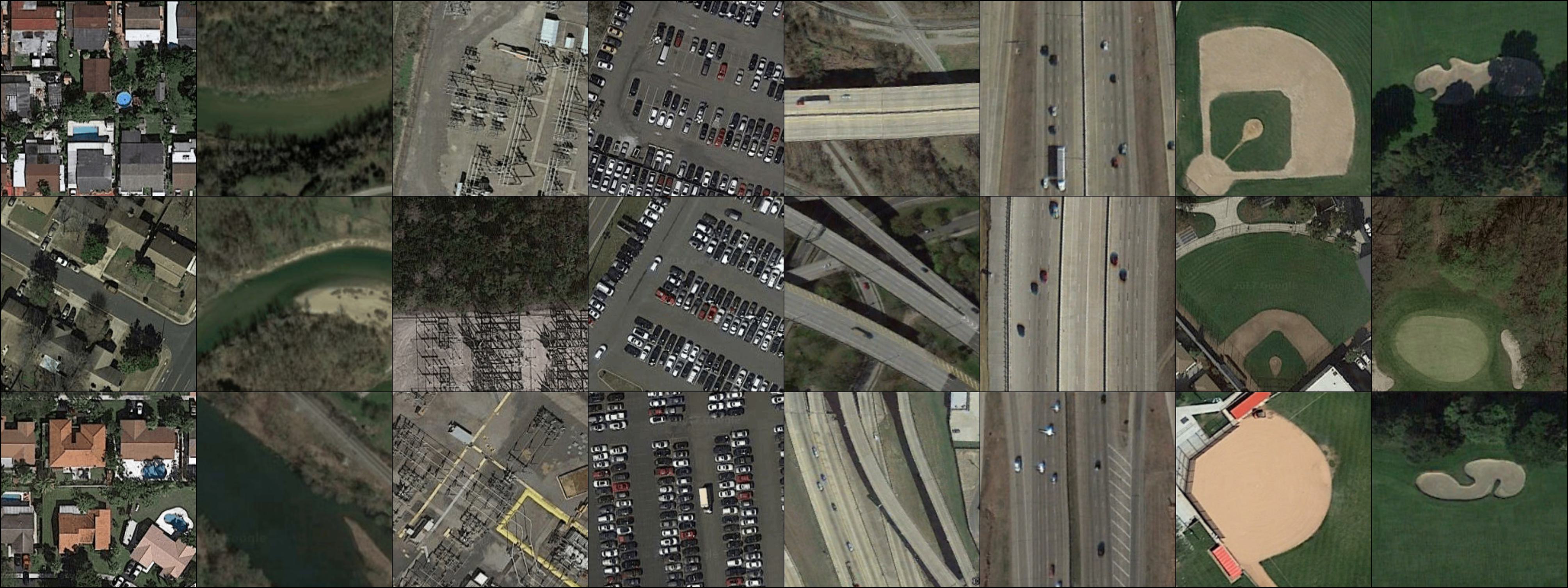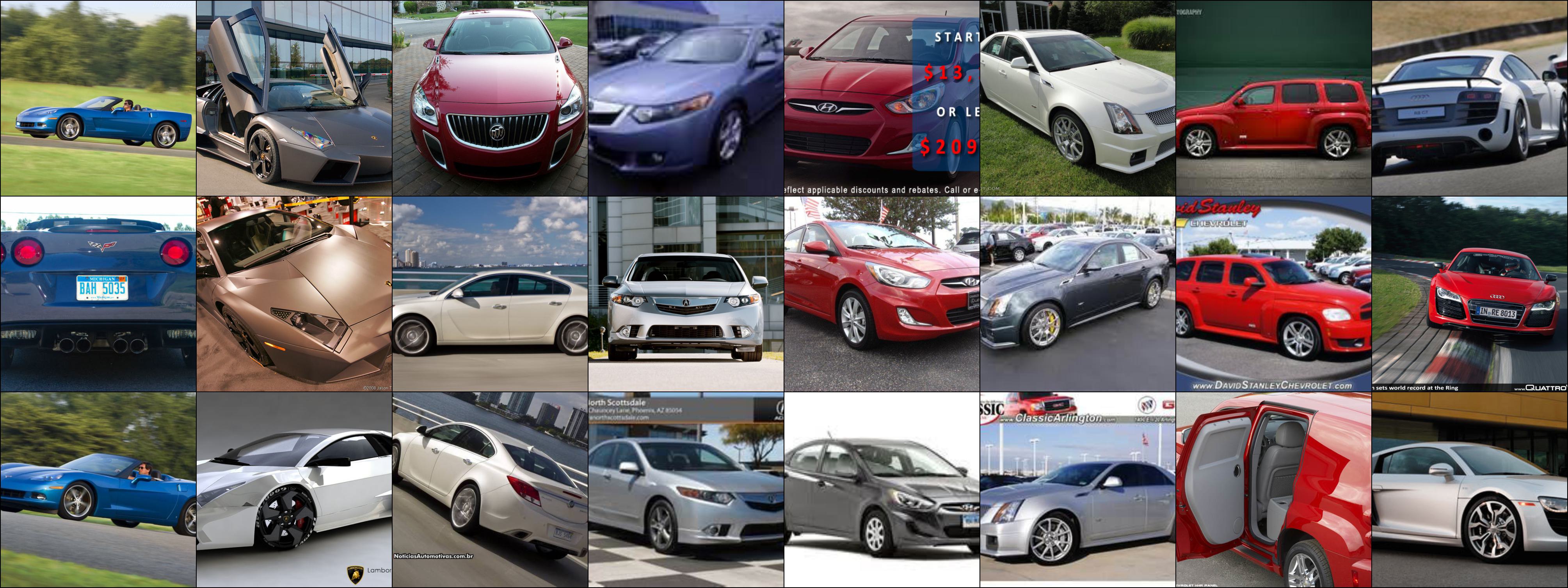Datasets
We report here extra details for the datasets included in the benchmark, including some visual examples for each one of them.
Table summary:
| Dataset | n. images | n. classes (ID, OOD) | n. domains | image type |
|---|---|---|---|---|
| DomainNet | ~154k | 100 (50, 50) | 6 | object-centric |
| DTD | ~5k | 47 (23, 24) | 1 | textures |
| PatternNet | ~29k | 38 (19, 19) | 1 | aerial pictures |
| Stanford Cars | ~15k | 196 (98, 98) | 1 | fine-grained cars |
| SUN | ~101k | 397 (198, 199) | 1 | scenes |
DomainNet
Original paper ↗
Official website ↗
Download links:
clipart,
infograph,
painting,
quickdraw,
real,
sketch

DomainNet contains object-centric images divided into 345 categories across 6 different domains (Clipart, Infograph, Painting, Quickdraw, Real, Sketch).
For our benchmark, we selected the 100 classes having the smallest semantic overlap with ImageNet-1k (using the Natural Language Toolkit) for a total of 153,696 images.
For each data order, we randomly selected 50 categories as ID and the other 50 as OOD.
We provide train splits formed by samples belonging to either a single domain (single-source) or all of them, minus the target one (multi-source).
Every test split is built from a single domain instead (single-target).
Considering the presence of 6 different domains, the benchmark provides the following numbers of different settings for DomainNet:
- intra-domain: 6 (one for each domain)
- single-source cross-domain: 30 (one for each pair of different train-test domains)
- multi-source cross-domain: 6 (one for each target domain)
Each setting includes 3 different configurations, corresponding to the 3 data orders.
DTD
Original paper ↗
Official website ↗
Download link

DTD (Describable Textures Dataset) contains 5,640 images of textures belonging to 47 different classes (we use a total of 5,320 samples). For each data order, we select 23 random classes as ID and the other 24 as OOD. For every train-test split, we follow the first fold provided by the original authors for their cross-validation strategy, merging train and validation data.
PatternNet
Original paper ↗
Official website ↗
Download link ↗

PatternNet is a dataset of high-resolution aerial pictures, designed for remote sensing image retrieval. It consists of 38 category containing 800 samples each (in this benchmark we use a total of 28,800 images). For each data order we selected 19 classes as ID and the others as OOD, following the train-test splits proposed by the original authors.
Stanford Cars
Original paper ↗
Kaggle ↗ (official website was removed)
Kaggle download link ↗

Stanford Cars is a large-scale, fine-grained dataset of car images. It contains 16,185 pictures divided into 196 classes (we use a total of 15,078 samples). We selected 98 random categories as ID for each data order and we followed the train-test split proposed by the original authors.
SUN
Original paper ↗
Official website ↗
Download link

SUN (Scene UNderstanding) is a large-scale dataset designed for scene understanding. It includes over 130k images divided into 899 categories, of which 397 are considered well-sampled. In this benchmark, we use a total of 100,883 pictures belonging to these 397 classes, picking 198 of them as ID for each data order and following the original train-test split.